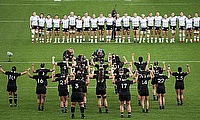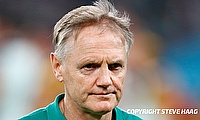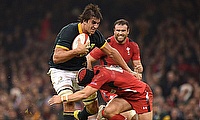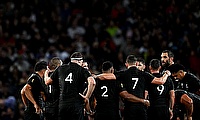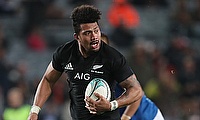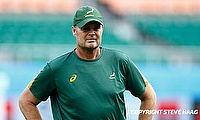Lessons to learn from the Rugby Championship
The Rugby Championship may still have a round of fixtures left to play, but the four games played so far have highlighted a lot of the respective strengths and weaknesses of the quartet from the southern hemisphere.
As expected, New Zealand have been in good form, comfortably seeing off Argentina in Christchurch, before rising from the ashes to clinch a memorable victory against South Africa in Johannesburg. They sit atop The Rugby Championship table with nine points and have a title-decider with Australia in Sydney looming on the horizon.
Though the All Blacks are obviously favourites for the upcoming Rugby World Cup, there are still chinks in their armour which can be exploited.
Argentina utilised the rolling maul with great effect at AMI Stadium, profiting with two Agustín Creevy tries and this led to New Zealand coach Steve Hansen labelling the maul as “bloody boring” and calling for a change in the way in which the maul is refereed.
This comes just a few short months after Hansen also criticised the number of defensive players standing offside in test rugby. It is noticeable that New Zealand, despite dominating world rugby over the last few years, have struggled at times against teams with faster defensive line speed, who like to blitz the All Blacks and prevent them from spreading the ball wide.
Though not a glaring weakness, the New Zealand scrum is also an area where teams can get after the world’s number one side and the likes of South Africa, Ireland and England will all feel confident about taking on the All Blacks in one or more of these three areas.
Whilst their weaknesses are short in quantity, albeit potentially significant in effect, their strengths are abundant. Enviable depth has been found in the half-backs with the likes of TJ Perenara and Lima Sopoaga taking their games to the next level over the last month, whilst the veteran duo of Ma’a Nonu and Conrad Smith seems to have lost none of its ‘clutch’ ability, proving clinical and error-free at the most important times in matches.
The lineout, breakdown and tactical kicking of the All Blacks has also prospered of late, with hooker Dane Coles and fullback-cum-wing Ben Smith two of the most in-form players on the planet. Hansen has game-breakers throughout his squad and with the leadership and experience of Richie McCaw and Dan Carter in the mix, he has every reason to be confident about his charges’ aspirations in England later this year.
Australia are the last remaining challenger to the All Blacks in this year’s Championship, and if they can beat their rivals from across the Tasman Sea this weekend, their stock will skyrocket ahead of the RWC.
The Wallabies’ weaknesses are well-known and though they haven’t prevented them from beating South Africa and Argentina so far this year, they are significant enough to potentially derail their RWC campaign at the group stage.
The scrum, a seemingly incurable Achilles’ heel for the men from Down Under, continues to plague an otherwise very talented team. The pairing of James Slipper and Sekope Kepu were taken apart by Tendai Mtawarira and Jannie du Plessis in their opening game of the Championship and though the introduction of Greg Holmes did right the ship somewhat in Mendoza, it’s still the glaring weakness in the Australian squad.
There is an abundance of quality in Australia’s collection of playmakers, but at this point, there are still more questions than answers at the fly-half and inside centre positions. The sextet of Bernard Foley, Quade Cooper, Matt Toomua, Christian Lealiifano, Matt Giteau and Kurtley Beale all have aspirations of locking down one of the two positions, but it’s hard to pinpoint which of the group, if any, are currently in pole position for the spots.
Forwards Stephen Moore and David Pocock have performed with aplomb so far in the Championship, distinguishing themselves above their peers, and both players should be at the core of the Australian pack at the RWC. The form of not only Moore, but also Rob Simmons and Scott Fardy, has helped turn the Australian lineout into a well-functioning unit, something which could prove pivotal against the well-drilled set-pieces of England and Wales.
The Australian back three is in fine fettle also, and regardless of perennial problems at the scrum, the Wallabies will be as dangerous as ever come the RWC.
It’s been a bitterly disappointing tournament for South Africa, who have outplayed both the Wallabies and All Blacks for vast swathes of their games, but ultimately found themselves beaten at the death.
The Springboks now have two games against Argentina to not only continue to build chemistry, but also to regain some momentum and confidence before heading north.
The unearthing of Jesse Kriel as a test rugby player has been a big boon for South Africa, whilst Jannie du Plessis’ return to form on the international stage has seen a resurgence in a Springbok front row which had arguably seemed to be declining over the last 18 months.
Kriel’s partnership with Damian de Allende in the centres, as well as their link-ups with fly-half Handré Pollard, has seen South Africa play some of their most ambitious and exciting rugby in years, and with Jean de Villiers returning from injury, Heyneke Meyer has some very welcome selection dilemmas ahead.
The depth of South Africa’s lock pool has been tested by injury, but certainly not found wanting, with Eben Etzebeth and Lood de Jager proving a formidable combination. The breakdown has also been an area of strength, as Schalk Burger and Francois Louw have been consistent threats, whilst Heinrich Brüssow’s return to international rugby was an impressive one. With Duane Vermeulen scheduled to return before the beginning of the RWC, the Springbok pack looks in good shape.
It’s difficult to pick out too many weaknesses given the impressive nature of South Africa’s performances, but their inability to see games out, thanks in large to some surprisingly loose defence, has undone much of their good work so far this year.
The returns of de Villiers, Vermeulen and Victor Matfield will undoubtedly help shore up the Springboks defensively and provide the leadership which may have been missing in recent games. That said, teams will have been encouraged that not only can they attack South Africa, but that they can also confine them and prevent the Boks from unleashing the threats of Bryan Habana and Willie le Roux out wide.
Unfortunately it’s been a campaign to forget for Argentina, with the South American side struggling against both New Zealand and Australia, and currently look well off the pace required to make a big impact at the RWC.
Their traditional strength, a fierce and uncompromising scrum, has been beset by injuries. The unit has looked dulled of late and aside from Marcos Ayerza, lacks the quality of many recent Pumas’ scrums. The group held its own against both New Zealand and Australia, at times even squeezing a slight advantage, but they were unable to attack the opposition in their usual fashion.
Argentina’s biggest concern however could be their fitness levels and late-game defence, both of which have seemed to let them down so far in the Championship. Both are areas which should improve with more time together before the RWC, but as of right now, they look a good step or two behind their fellow southern hemisphere nations.
Their squad is littered with exceptional young talents, but the truth of the matter is that the RWC in Japan in 2019 will more than likely be the showcase for most of these prospects, and this RWC realistically looks like a learning opportunity for a team which could be a much more formidable foe in four years’ time.

